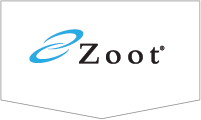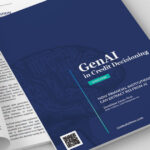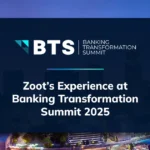Millions of people and businesses face structural and cultural barriers to pursuing their financial goals. In 2020, the OCC (Office of the Comptroller of the Currency) launched Roundtable for Economic Access and Change (Project REACh) to provide underserved populations with access to financial opportunities.
Economic inequality in the U.S. has been rising for decades. According to Michael J. Hsu, Acting Comptroller of the Currency, from 1983 to 2016, lower-income household wealth fell, while median- and upper-income household wealth doubled to more than 70x that of lower-income households.

“Project REACh convenes those with the ability to help reduce inherent and structural obstacles so underserved populations have the same opportunities to succeed and benefit from the nation’s financial system as others.”
Michael J. Hsu, Acting
Leaders of community groups, civil rights organizations, the financial services industry and tech companies have come together in teams to identify barriers to financial inclusion and collaborate on ideas for solutions. The overarching goal is to drive change on a national level and successfully implement local projects to serve as models for financial inclusion and wealth-building.
The Project REACh teams are tasked with facilitating entry into mainstream financial services for economically disadvantaged populations and small and minority-owned businesses.
One of four distinct components of Project REACh, the Alternative Credit Scoring Utility Workstream, focuses on financial inclusion to increase economic access.
Credit Invisible: consumers who do not have a credit record with the NCRAs
Unscorable: consumers who have limited credit records with no recent activity, too few accounts, or accounts too new to be reliably scored.
Subprime: consumers who, based on their history and credit score, present a higher level of risk to lenders when compared to prime consumers.
According to a recent Experian report, almost 50 million (19%) adults in the U.S. do not have a conventional credit score (credit invisible or unscorable) – and there are an additional 57 million subprime consumers. Overall, 42% (106M) of the U.S. adult population is faced with establishing or reestablishing credit.
This population of credit invisible consumers includes a disproportionate number of consumers of color, low-income households, immigrants and young adults, as does the general population of renters.
“The goal of Project REACh’s Alternative Credit Scoring Utility workstream is to identify and evaluate models that are predictive of credit behavior using alternative data, such as demand deposit transactions, rent payments, or bill payments.”
Grovetta Gardineer, Sr. Deputy Comptroller for Bank
Supervision Policy, OCC
The Alternative Credit Scoring Utility Workstream group is evaluating overall existing credit models and leveraging research to explore and broaden the use of alternative data sources. Working with banks, community organizations and technology partners, they are pursuing the development of a credit scoring utility that will integrate traditional credit bureau data and other alternative data.
People who lack a credit score can often demonstrate or boost creditworthiness through a number of channels:
- Alternative data capture on-time utility, telecommunications and rent payments (UTR).
- Trended data helps predict future consumer credit behavior by defining a pattern of historic financial activity.
- Cash-flow data from deposit accounts provide a clear picture of how applicants manage their day-to-day finances.
Integration of supplemental, FCRA-compliant information (e.g., alternative, trended and cash-flow data) into credit decisioning could help millions of consumers trying to establish a credit score.
Members of the workstream are designing a framework for financial institutions to share account data. Ten banks have committed to participate in the pilot program and, to help expand credit access, will consider applicant data from various sources.
In an analysis of six non-bank credit providers, FinRegLab, a nonprofit think tank, found cash flow data to be predictive of credit risk across providers, products, and borrowers.
The progress of the Project REACh workstream is encouraging – showing great potential for improving scoring models and increasing access to data. Many hurdles remain, but leveraging alternative, trended and cash-flow data is a win-win solution for FIs and the credit invisible, unscorable and subprime consumer.
“It’s in both of our interests for FIs to get a ‘yes’ for thin file customers – but for a product they can afford and meets their needs.”
Lisa Fischer




